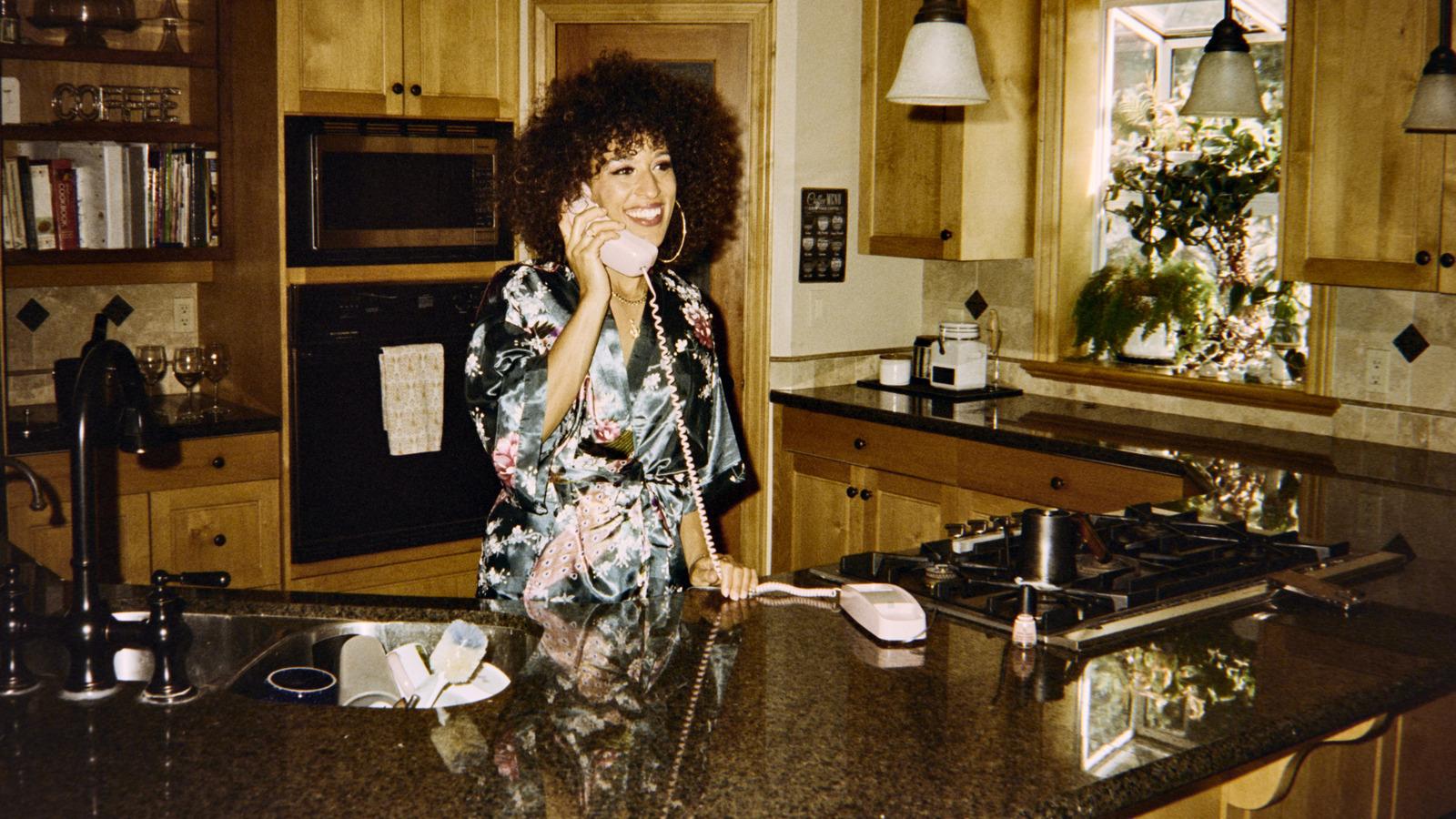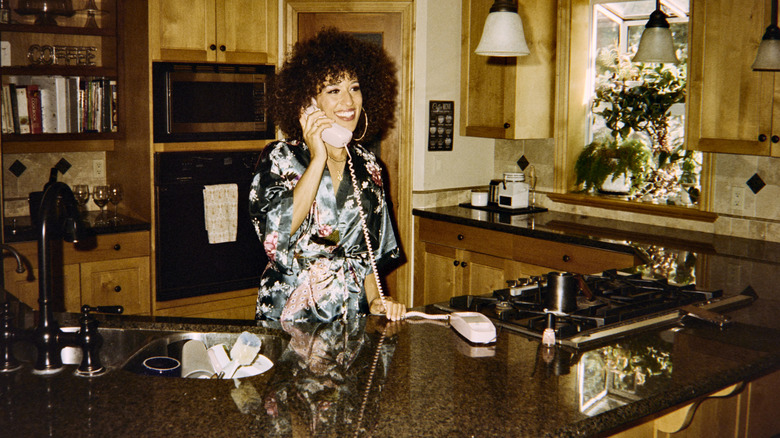
O2o Creative/Getty Images
Step into any kitchen from the 1980s, and you'd be greeted by a wave of warm tones and the unmistakable scent of something being microwaved. The '80s kitchen was considered the heart of the home, where everything from cozy family dinners to big get-togethers was hosted. So, it should come as no surprise that the kitchen was the backdrop for many fond memories.
While the everyday items that filled kitchens may have seemed common at the time, they often bring up a sense of nostalgia when we look back decades later. These kitchens weren't trying to be sleek and minimalist. They were busy, colorful, and filled with character. Every inch of cabinet space was taken up by a cool, new gadget, and patterned wallpaper and linoleum floors were all the rage.
So, whether you want to reminisce on the good ole days or feel thankful that you no longer have to fight with your family over who gets to use the single house phone, this list is for you. Here are some of the old-school items that dominated every kitchen in the '80s.
Harvest Gold appliances
It seems like every kitchen today is decked out with stainless-steel appliances. Touted for being sleek and versatile enough to pair with almost any style, it's hard to imagine getting appliances in any other finish (if you could even find another option). But that wasn't always the case. In fact, bold, colorful appliances were popular for decades.
Going as far back as the '50s, appliances were available in colors like yellow, green, pink, and blue. Frigidaire even tried to introduce a Charcoal Gray as a neutral option, but it was so unpopular, it was discontinued within three years. As the '70s approached, the trend switched to more natural hues, like avocado and almond, which paved the way for the now-infamous Harvest Gold to take over in the '80s.
This warm yellow was featured on all home appliances, from ranges to dishwashers, and could even be spotted on other kitchen supplies, like mixing bowls. It brought warmth and a pop of color to kitchens across the country. Today, Harvest Gold is seen as dated, and with stainless steel holding on strong, it seems like colorful appliances will remain in the past.
Salad spinners
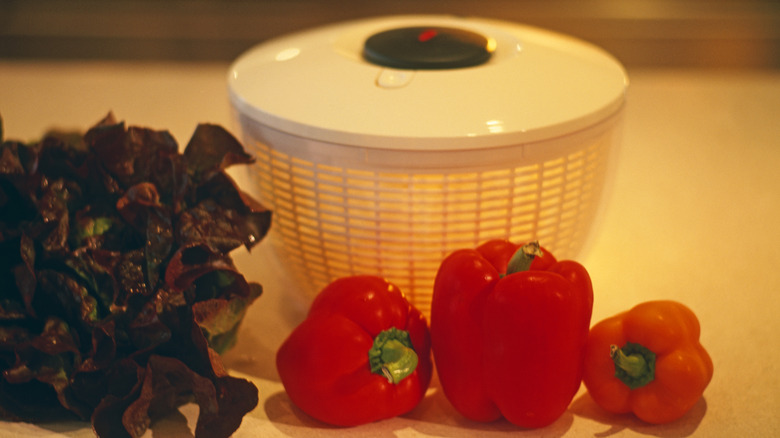
Roger Brooks/Getty Images
Among the kitchen gadgets that really captured the spirit of the 1970s and 1980s, few were as satisfying as the trusty salad spinner. It transformed what used to be the messy chore of washing lettuce and blotting it dry with towels into a fun little activity that left greens crisp, dry, and ready for dressing. Similar devices had been around since as early as the 1800s, but the design we know and love today was patented in America 1973.
At first, it seemed as though the salad spinner would flop. Magazines waved it away, labeling it as mere clutter. However, attitudes changed as Americans' opinions on heath evolved. In the late '70s, American families became more health-conscious, and salads went from being a boring side dish to the star of the show.
Cookbooks dedicated to salads came out, lettuce sales increased, and the salad spinner became a popular gadget for the average American. Surprisingly, salad spinners haven't changed much over the past few decades. That original designed has stood the test of time, and people are still adding a good salad spinner to their kitchens today.
Juicers
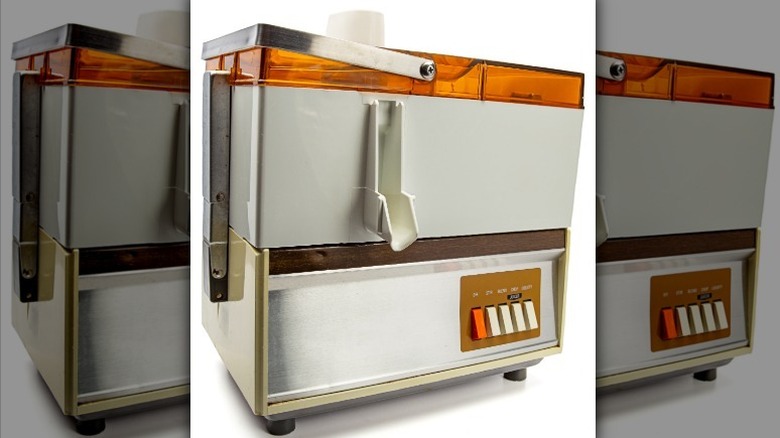
Yannp/Getty Images
Way before green juice was sold at every café, juicing had begun its rise in home kitchens across America. Throughout the 1980s, juicers became a staple in many households, not just for their convenience, but for what they represented: a new wave of health-conscious living. But juicing was nothing new. In fact, it's been around since 150 B.C.
But thanks to Dr. Max Gerson's fruit-and-vegetable diet in the 1920s and Dr. Norman Walker's industrial juicing machine invention in the 1930s, the idea of juicing started to become more popular and accessible. It slowly gained traction over the next few decades before exploding in popularity in the '80s, thanks in part to celebrities endorsing juice cleanses. Home cooks turned to juicers to bring more fresh fruits and vegetables into their diets, and it became a common appliance for the average person.
While there are plenty of juicers still on the market today, they're not as popular as they were in the '80s. People found at-home juicers to be messy, and juice bars started popping up making it convenient to buy your fresh-squeezed juice. Today, people also question if juice cleanses are even good for you.
House phones
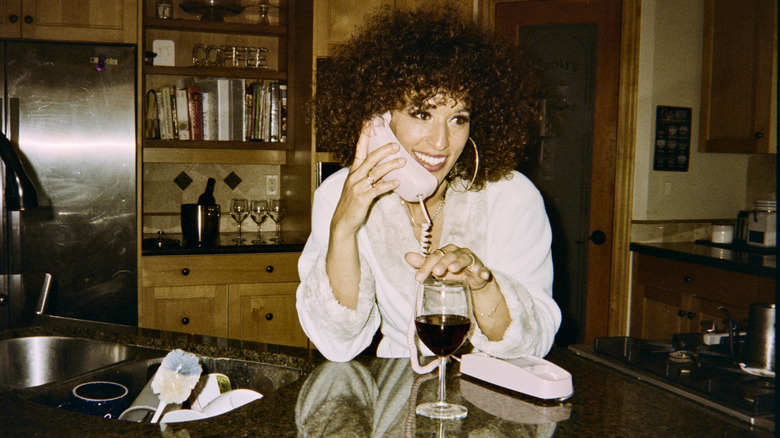
O2o Creative/Getty Images
If you lived through the 1980s, you know that the landline phone was practically another member of the family. Commonly found mounted on the kitchen wall, it was hard to get any privacy for your conversation, but that didn't stop you from trying by stretching that phone cord as far as you possibly could. The '80s brought an end to the rented phone, giving families more flexibility to choose a phone that met their needs.
While most stuck with a simple and classic design, some went unique with Mickey Mouse or Snoopy designs, allowing it to double as a fun piece of décor. But the most coveted of all designs was the new cordless phone. This allowed you to take your conversation anywhere in the home for that much-desired privacy. Of course, since the phone was still shared among the entire family, the base still stayed in the kitchen, and will forever remain an iconic part of '80s kitchens.
Big microwaves
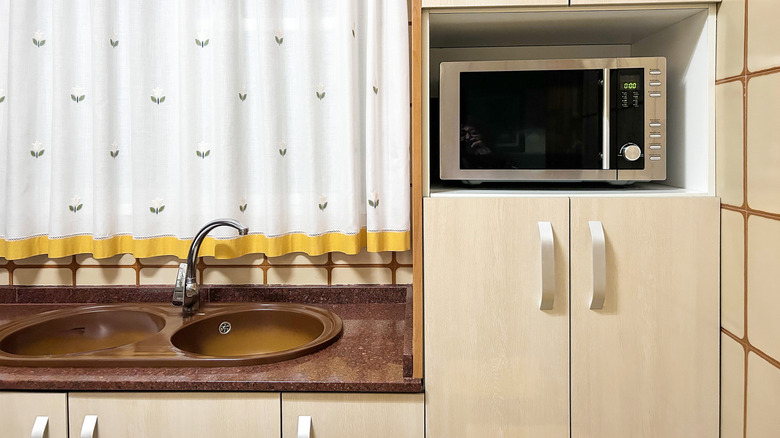
Maria Casinos/Getty Images
If there was one appliance that transformed the 1980s kitchen, it was the microwave. And not the sleek ones we have today — the big, bulky ones that took up half the counter. What started as an expensive appliance only found in restaurants and canteens, slowly became more affordable until it took kitchens by storm in the '80s.
This newest convenience was embraced by families. It was easy enough to use that kids could make their own after-school snacks and powerful enough to speed up dinner. Frozen meals also became popular, and brands like Kid Cuisine and Swanson became household names.
Microwaves weren't introduced without a hitch, however. People learned the hard way that metal sparked and food could get so hot that it could burn and start a fire. There also seemed to be a lot of trial and error over what foods worked well in the microwave and which, like hard boiled eggs, didn't. But despite these hiccups, families continued to utilize their microwaves, allowing them to remain as popular as ever.
Microwave cookbooks
With the microwave being the pinnacle of new, trendy kitchen technology in the '80s, it makes sense that people wanted to use it to its fullest potential. That's where microwave cookbooks came in. Many manufacturers included their own cookbook with their microwaves, and it didn't take long for chefs and the like to make dedicated microwave cookbooks.
These books served many purposes: they gently introduced readers to the science behind how microwaves work and taught them how to use their newest appliance. Many also framed microwaves as full-on cooking tools, capable of making fancy dinners. For example, in "Microwave Cookery", the cookbook outlines how you can make microwaved roast beef, complete with a special sauce to make the meat look more appetizing.
At the time, microwave cookbooks were exciting. They offered recipe ideas that seemed futuristic, and so convenient, you just had to try it. Unfortunately, the meals themselves usually didn't live up to the hype. After swallowing down one too many dry, rubbery meals, people started moving away from microwave cookbooks. Still, these cookbooks remain as fun, quirky relics of '80s innovation.
Country farmhouse décor
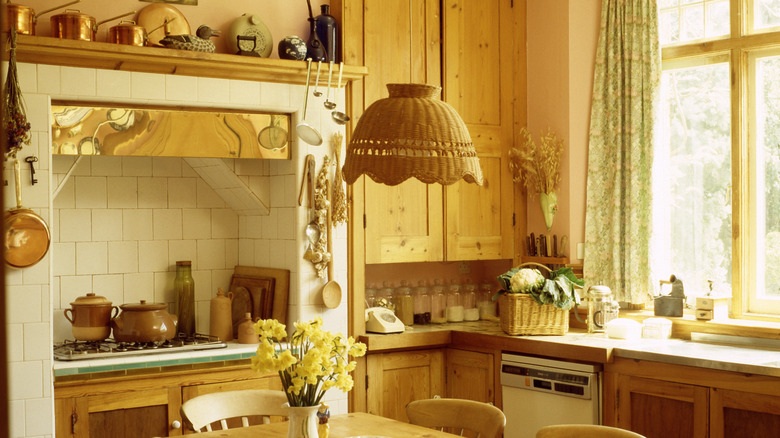
Gyro/Getty Images
Farmhouse interior design might bring up images of shiplap and barn doors that seemed to be everywhere in the 2010s. But the country farmhouse aesthetic started before the turn of the century. In the 1980s, country décor was all the rage, turning kitchens into cozy, rustic escapes. The look fused the warmth of farmhouse elements with layers of knick‑knacks and wood tones that provided an extra homey feel.
There seemed to be no one "right" way to achieve this style. Some went with florals, others did gingham, and others decked out their space with antiques, like washboards and Coca-Cola memorabilia. But perhaps the most famous way to achieve a country kitchen was to plaster the room with décor and wallpaper of geese wearing blue ribbons tied in a bow around their neck.
Of course, while the country aesthetic felt homey, it also could feel overwhelming with too many patterns and knick-knacks. Eventually, this trend faded and it seemed like the iconic country décor of the '80s was gone forever. But recently, this style has seen a resurgence in the cottagecore trend, and even the iconic country geese are coming back, blue ribbon and all. So, it turns out that this old-school trend may be found in kitchens of the 2020s as well.
Air-pop popcorn makers
Making popcorn is a simple task now, but in the '70s, families had to shake kernels and oil in a pan over the stove. While not necessarily the hardest job, it also wasn't the cleanest or most convenient. Air-pop popcorn makers changed the game in the '80s.
The first thing that set them apart was that they used hot air instead of oil so they were healthier and made less of a mess. They were also easy to use and didn't require constant attention like shaking a pan over the stove. Some models took things a step further and included a special tray to melt butter, so you could make the perfect bowl of popcorn using just one gadget. Of course, popping the kernels with air also means the flavor of the oil isn't present, so families could experiment with other popcorn toppings.
All these benefits led to air-pop popcorn makers increasing in popularity until they were a staple in every 1980s kitchen. While some people still swear by them, they have fallen out of popularity with the masses. Microwave popcorn was invented around the same time and as it became more affordable, it took over as the primary way to make popcorn at home.
Colorful Tupperware
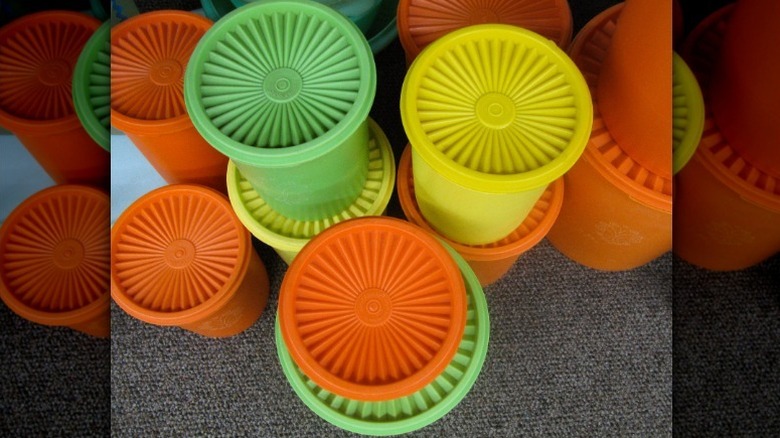
Vince360/Shutterstock
If kitchens in the '80s had a signature accessory, it was Tupperware. These weren't just any boring, old containers. They were specially designed to keep food fresher for longer and came in fun colors, like green, yellow, brown, and orange, with a signature sunburst pattern on the lid. The brand also expanded to sell things like pitchers, domed serving trays, ice buckets, and matching sets that practically begged to be shown off at potlucks.
Tupperware ended up becoming a bigger part of social circles through its unique and innovative concept of Tupperware parties. When the containers weren't selling well shortly after their creation in 1946, businesswoman Brownie Wise came up with the idea to demonstrate their effectiveness and sell them in homes. Not only was this successful in selling products, but it also offered women a rare opportunity to make money on their own time.
These parties were wildly successful for decades because they weren't just about selling kitchenware. They also acted as social engagements that left many women feeling empowered. As a result, Tupperware became a household name and filled kitchen cabinets throughout the '80s. Unfortunately, the tactic of direct selling fell out of favor by the '90s, and the company was slow to switch to retail sales, resulting in it dropping in popularity. However, these colorful containers proved so durable that some people still have them from the '80s.
CorningWare
In the 1980s kitchen, CorningWare was everywhere. And for good reason. These ceramic-glass dishes were the first of its kind. The dishes cooked, served, and stored food, able to go from the freezer straight into a hot oven without breaking.
While the brand may be best known for its casserole dishes, it didn't stop there. The brand also made Dutch ovens, loaf pans, cake pans, ramekins, souffle dishes, teapots, and so much more. You could almost fill your kitchen with CorningWare products, and many families did.
Not only were ComingWare products durable and convenient to use, but its also stylish with delicate patterns. Some of the iconic designs in the '80s were Spice O' Life, French White, Wild Flower, English Meadow, and Blue Cornflower. In fact, Blue Cornflower was so iconic that CorningWare decided to revive it for its 60th anniversary.
While you can still buy brand-new CorningWare today, it's the vintage dishes from the '80s that are in high demand. Rare patterns and the famous Blue Cornflower typically fetch the most, with one seller getting over $10,000 for their vintage CorningWare. While these may have been commonplace in '80s kitchens, they're certainly turning heads today, proving that there's always a place in the kitchen for a good product.



